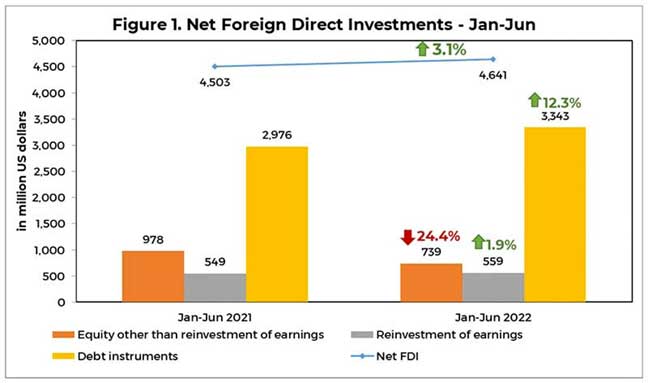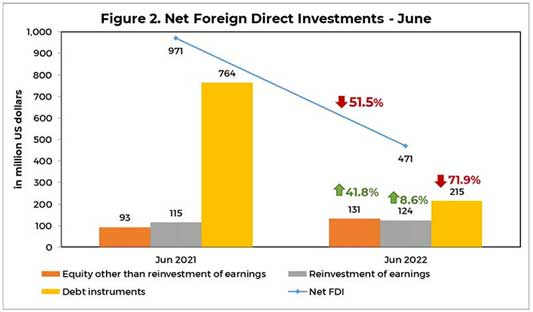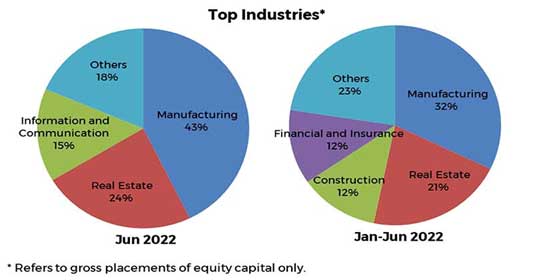Foreign direct investment (FDI) continued to post net inflows amounting to US$471 million in June 2022, although lower by 51.5 percent than the US$971 million net inflows in June 2021.1,2
On a year-to-date basis, FDI net inflows for the first half of the year reached US$4.6 billion, higher by 3.1 percent than the US$4.5 billion net inflows recorded in the comparable period in 2021 (Figure 1).
The cumulative growth was due to the expansion in non-residents’ net investments in debt instruments, which more than offset the decrease in their net placements of equity capital (other than reinvestment of earnings).[3]

In June 2022, FDI net inflows declined following the drop in non-residents’ net investments in debt instruments of their local affiliates due to higher repayments during the month. This muted the increase in their net investments in equity capital and reinvestment of earnings (Figure 2).

Equity capital placements during the month were sourced mostly from Japan, the United States, Singapore, and Switzerland. Investments were channeled mainly to the 1) manufacturing; 2) real estate; and 3) information and communication industries.

1 The BSP statistics on FDI are compiled based on the Balance of Payments and International Investment Position Manual, 6th Edition (BPM6). FDI includes (a) investment by a non-resident direct investor in a resident enterprise, whose equity capital in the latter is at least 10 percent, and (b) investment made by a non-resident subsidiary/associate in its resident direct investor. FDI can be in the form of equity capital, reinvestment of earnings, and borrowings.
2 The BSP FDI statistics are distinct from the investment data of other government sources. BSP FDI covers actual investment inflows. By contrast, the approved foreign investments data that are published by the Philippine Statistics Authority (PSA), which are sourced from Investment Promotion Agencies (IPAs), represent investment commitments, which may not necessarily be realized fully, in a given period. Further, the said PSA data are not based on the 10 percent ownership criterion under BPM6. Moreover, the BSP’s FDI data are presented in net terms (i.e., equity capital placements less withdrawals), while the PSA’s foreign investment data do not account for equity withdrawals.
[3] Net investments in debt instruments consist mainly of intercompany borrowing/lending between foreign direct investors and their subsidiaries/affiliates in the Philippines. The remaining portion of net investments in debt instruments are investments made by non-resident subsidiaries/associates in their resident direct investors, i.e., reverse investment.





















